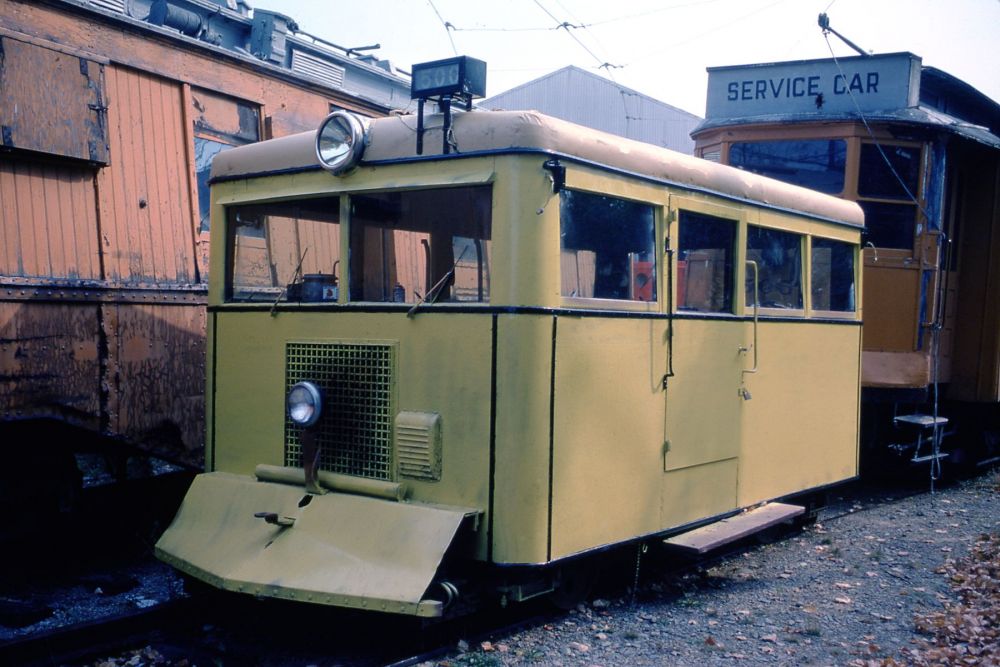
Norman Down
- Builder
- Fairmont Railway Motors
- Description
- Inspection car
- Type
- Railway Work Equipment
- Year
- 1936
- Acquired by the Museum
- 1963
- Note
- No. 500 is in operating condition.
- Fund
- 539
Boston & Maine Railroad 500
From Massachusetts
History
Fairmont Railway Motors built this track inspection car for the Boston & Maine Railroad in 1936. Fairmont, located in Fairmont, MN, began life in 1900 as a small machine shop manufacturing single cylinder engines mainly for farm uses, such as pumping water and cutting wood. In 1909 the Fairmont Machine Company began modifying pump cars by equipping them with their one-cylinder motors, which increased the maximum speed of the former pump car from 15 mph to 40 mph, turning them into what is known today as speeders. In 1923, the company name was changed to Fairmont Railway Motors. In the early 20’s, Fairmont began designing and building their own speeders, equipped with their one-cylinder motor. They also began producing maintenance-of-way equipment. In the 1940’s, Fairmont began developing HY-RAIL equipment that could be mounted on rubber tired vehicles, permitting them travel on railroad tracks as well as roads, creating greater efficiencies and flexibility for maintenance of way departments. On June 8th, 1979, Fairmont merged with Harsco, a diversified enterprise located in Harrisburg, Pennsylvania. The last Fairmont speeder was produced by Fairmont in 1991, replaced by HY-RAIL vehicles .
The B&M originally numbered the car No. 1500. When the railroad later purchased a diesel locomotive No. 1500, it painted over the “1” on the inspection car, making it No. 500. No. 500 was powered by a 6-cylinder Waukesha gasoline engine. The car seats 8 people and is only 16 feet long. It is, however, larger than the more common gasoline “speeder” cars used for track inspection and for transporting track workers. During World War II, the B&M made No. 500 a “Bond Car.” It carried management and union representatives to smaller locations around the railroad to promote War Bonds. Seashore acquired No. 500 from the Boston & Maine in 1963. A crew of museum volunteers (who were also B&M employees and retirees) picked up No. 500 at the B&M’s Boston Engine Terminal and ran it over the railroad to the siding at Kennebunk under special orders. Thus, No. 500 is Seashore’s only rail vehicle to arrive under its own power, except for the short truck trip from Kennebunk to the museum. That same year, when the museum lost electric power for a few days, Seashore could still give rides to visitors by using No. 500 to pull Nagasaki No. 134. No. 500 is believed to be one of only a few surviving inspection cars of this type. A similar car from the Maine Central Railroad is at the Connecticut Eastern Railroad Museum.
The museum has done extensive restoration on No. 500. Seashore has done mechanical work and has replaced the wooden sides and roof. Seashore applied a yellow paint scheme which was the B&M’s work equipment color in later years. In 2024, Seashore’s Restoration Shop completely refurbished No. 500. Seashore replaced the Waukesha engine with a Dodge 6-cylinder engine.
Technical Information
- Seats: 8
- Control: Throttle
Motor
- Number: 1
- Manufacturer: Dodge
- Model: 6-cyl
Weight and Dimensions
- Length: 16’
- Width: 8’ 2.00"
- Height: 8’ 10.00"
© 1998 - 2025 New England Electric Railway Historical Society. All Rights Reserved.